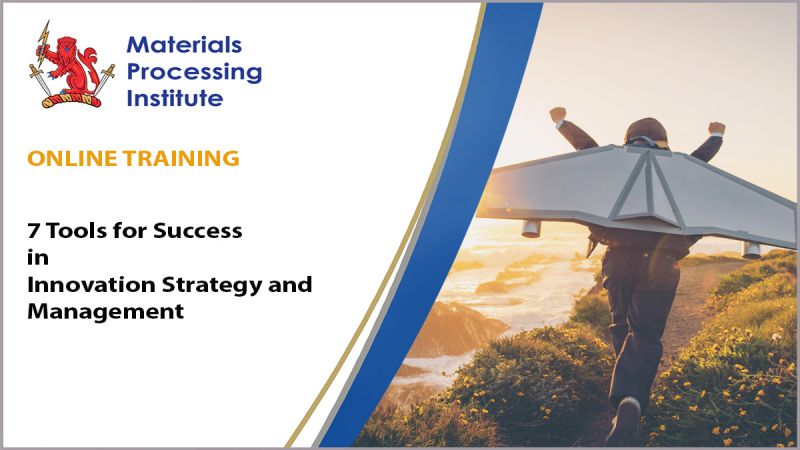7 Tools for Success in Innovation Strategy and Management

ONLINE COURSE - 7 TOOLS FOR SUCCESS IN INNOVATION STRATEGY AND MANAGEMENT
To access this course click here
The Materials Processing Institute has launched the next course in its developing series of online training courses which are can be accessed instantly and are available to complete at any time and on demand.
Advancements in technology and competitiveness create great opportunities in adopting innovation, but also a risk that those organisations which lack innovation capability will fall behind. At times the number of available technologies and the pace of technological change can seem bewildering. The time and money that we invest in innovation is extremely precious.
This course is delivered by Chris McDonald, the CEO of the Institute who knows from his experience working in both large and small companies, that the secret to success in innovation is understanding how to create an innovation strategy that is right for an organisation and how to implement innovation projects successfully.
Chris has worked in senior roles in industrial innovation for over 20 years, leading international teams, carrying out research into new product developments, productivity enhancement and environmental improvement. He understands the commercial pressure to reduce the risk of innovation and to bring new products quickly to market.
Anyone taking this course will benefit from his experience and learn how to improve effectiveness in managing innovation by:
Setting an innovation strategy
Building an innovation portfolio
Delivering value and success
On completing this course, participants will have learned 7 practical and useful tools that they can start using immediately to become an expert and recognised leader in successful innovation strategy and management.
This course will benefit anyone who is , or who has aspirations to be senior leaders in research and innovation, either in industry, or academia and includes, scientists, researchers, technologists, technology managers, researchers, chief technology officers and executive directors.
The full course consists of three modules:
MODULE 1 – SETTING YOUR INNOVATION STRATEGY
This module looks at why we need innovation and what the pitfalls are if we do not do innovation. The next step looks at the risk appetite of businesses matching the technology push from the external business environment and the technology pull within businesses. The final stage involves drawing all of these factors together into a technology roadmap.
MODULE 2 – BUILDING AN INNOVATION PORTFOLIO
This module covers why it is important to manage risk in innovation and how a programme of innovation projects can be organised to achieve this. To build a successful portfolio, businesses will need to be able to assess the risk of individual projects and this module describes two complementary techniques that you can use. By the end of this module participants will have a firm grasp on how risk in innovation can be managed through building a diversified portfolio, but more than this, they will have a practical understanding of how this can be applied in their own organisation.
MODULE 3 – DELIVERING VALUE AND SUCCESS
Module 1 started with organisational strategy, then module 2 covered an innovation portfolio; this final module moves to the level of the project. Here participants will learn how to build a balanced portfolio and determine the technical feasibility for projects. The module covers prioritisation, so participants can see where they should be dedicating resources for the best return, then moves on to project selection and management. Finally, the module wraps up with advanced implementation issues. These are areas where even the most advanced technology managers have difficulty and are critical for success.
By taking the course participants will learn:
How to determine the risk appetite of your business.
Building a technology roadmap to describe your innovation strategy.
How to assess the risk of individual projects, based on commercial potential and technology risk.
How to build a balanced innovation portfolio for maximum success.
How to prioritise innovation projects to allocate resources effectively.
How to manage a portfolio of innovation projects.
Key barriers to implementation and how to overcome them.
For more information and to access this course click here
LINKS TO OTHER ONLINE STEELMAKING COURSES:
Adding Value by Reducing Quality Defects in Continuous Cast Steel Semis
Continuous Casting Instrumentation for Optimum Steel Quality
Refractories for Steelmaking and Casting
Fluid Flow Modelling for Process Improvements
29 September 2020


